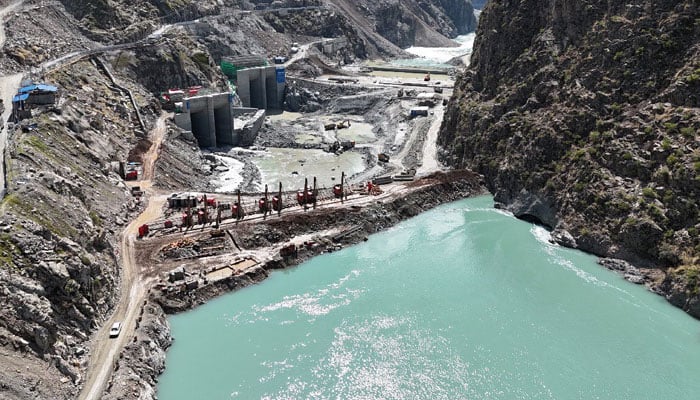Chinese firms have temporarily halted construction on the Dasu and Diamer-Bhasha dams.

A day after work at the Tarbela 5th Extension Hydropower Project was also put on hold, Chinese businesses in charge of operations at the Dasu and Diamer-Bhasha Dams have temporarily paused civil work at the sites due to security concerns, The News reported on Friday.
This development follows earlier this week’s terror incident in Shangla, which resulted in the deaths of at least six individuals, including five Chinese engineers who were working on the Dasu Dam.
The passengers died on Tuesday when their bus was struck by an explosive-laden automobile on the Karakoram Highway in the Bisham region.
An official working on the project revealed to the publication that approximately 991 Chinese engineers were employed on both projects, with the local workers being instructed to remain at home until further orders are given.
At District Upper Kohistan, the 4,320 MW Dasu Dam is being constructed by over 6,000 locals and 741 Chinese laborers. Chinese engineers are still employed at the Mohmand Dam site in Khyber Pakhtunkhwa, where construction is still ongoing.
In a similar vein, a Chinese company’s suspension of dam construction was verified by GM Diamer-Bhasha Dam (DBD) Nazakat Hussain. According to him, there were about 500 Chinese nationals working in DBD, but FWO personnel are still employed. Approximately 6,000 residents are working on the dam project.
In a few days, he hoped, things would settle down and the Chinese workers would return. By using hydropower, the Diamer-Bhasha Dam would generate 4,800 MW of electricity.
Asim Rauf, the general manager of the Mohmand Dam, told The News that the 250 Chinese laborers are still working on the project and have not stopped.
“Chinese have shown satisfaction over the security situation in the project area, and they are working on the site,” according to the official.
After it is finished, the Mohmand Dam will manage floods downstream, irrigate 15,100 acres of land, and provide 740 MW of hydroelectricity.